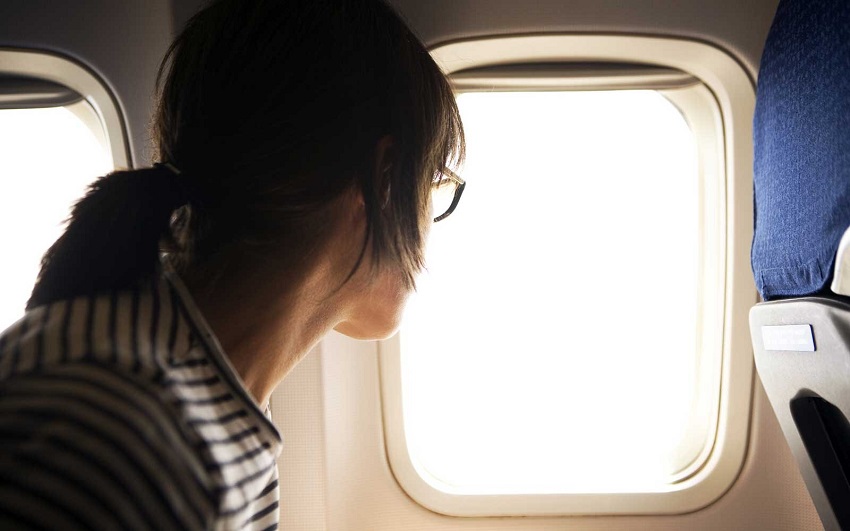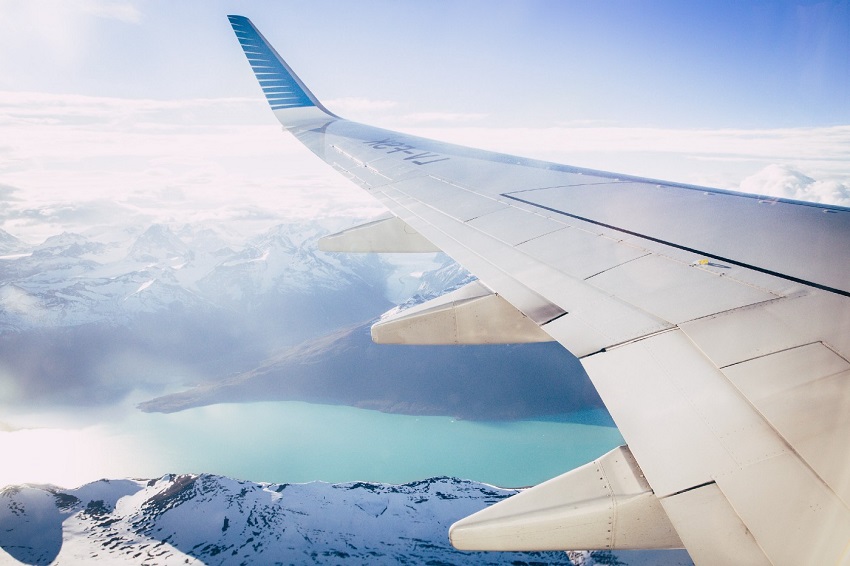Most of us have experienced certain levels of discomfort on an airplane. And if you travel economy class on a transatlantic flight, it is usually not a pleasant thing to do.
L os modern aircraft usually n fly at an altitude of between 1,828 and 2,438 meters, which is equivalent to the height of a small mountain.
So there is less oxygen and gases expand in our body cavities.
There are other stressors as well, such as flight delays, security checks, noise and vibrations on board, changes in temperature, humidity, lack of space, and jet lag.
But there are ways to make the trip much more bearable. We tell you some.
pre-flight stress control

Rob Bor, a clinical psychologist at the Royal Free Hospital in London, UK, advises preparing ahead of time for the trip.
“Many people do not check the documentation or know their flight times or the airport to which they should go,” says Bor.
They check everything the same day and that’s not enough, he warns.
” Scan your passport and save it in your email, just in case, ” he advises.
Eli g and your seat
Choose your seat on digital platforms such as Seat Guru (from Trip Advisor), which uses color codes for different aircraft and airlines, advising passengers on the best seats and discarding those that are very close to the bathroom or cannot recline, for example.
According to experts, if you sit close to the wings of the plane you will notice less turbulence.
And if you forgot to choose your seat, ask at the boarding gate. There may be a better one if the flight is not full.
Eat light
Fasting before a long-haul flight will make jet lag more bearable.
Harvard researchers say that eating nothing for about 16 hours before boarding the plane can help travelers adjust more easily to the new time zone.
If you prefer to eat something, do not opt for greasy or fried food.
And avoid gas-inducing vegetables like onions, broccoli, cauliflower, cabbage, or beans, as well as alcohol and sodas.
Once onboard, choose “healthy, light and easy to digest food, like fruit or salad,” says Alwin Van Drongelen, a chronobiologist at the VU University Medical Center in Amsterdam, the Netherlands.
Drink water
When it comes to liquids, don’t limit yourself. Even if you are in the middle seat and have to disturb other passengers to go to the bathroom.
“(Not drinking fluids) is one of the reasons bladder infections and cystitis are common among women after a long-haul flight, Dawood says.
The specialist advises drinking at least half a liter of water every three hours.
Also, drinking alcohol increases dehydration.
Not only will alcohol make you drink more, but also, due to the low humidity, “one unit of alcohol on board is equivalent to two on land,” Bor clarifies.
Breathe well
Low humidity levels also affect our nose, throat, skin, and eyes, especially if we wear contact lenses.
People with breathing problems or smokers are at higher risk, says Brian McCrary, medical director at the Glendale Family Health Clinic in Scottsdale, USA.
So if you need an inhaler, don’t forget to carry it by hand.
If you feel short of breath, put a damp cloth on your face and breathe through your mouth.
Another idea is to include a water spray, a lip balm, and a moisturizer in your travel bag.
Sleep well
Sleeping onboard can be difficult for many, especially if you travel economy class.
Wear loose clothing and lots of layers to cope with the changing temperatures of long flights, warns David Gradwell, professor of Aerospace Medicine at King’s College London.
Also bring comfortable socks and a scarf, or a large scarf that you can use as a blanket.
Also an eye mask, and don’t forget the neck pillow.
“If your neck falls to the side, the flow of oxygen is interrupted and you will wake up, which will make the trip more uncomfortable,” says Bor.
Block out noises
Active noise-canceling headphones are a nice (and expensive) way to block out engine noise and other distractions.
Cabin noises are louder than those we are normally used to and can exceed 80 decibels at take-off and landing.
Acceptable noise levels in work environments are around 40 decibels in an office, and 60 in a service delivery area, says Brett Molesworth of the University of New South Wales School of Aviation in Sydney, Australia.
Some studies say that cabin noise affects our memory and causes us fatigue.
In the future, travelers may be able to sleep better with devices such as Boeing’s recently patented “sleep support system” for sleeping in an upright position, with a cushion, backpack, and headrest pillow. and chest.
But in the meantime, if you really can’t sleep on board, opt for pills that are available without a prescription, says Bor. For example, synthetic melatonin or sleeping pills, although this does not work for everyone.
Move
Another problem, especially on long flights, is the risk of deep vein thrombosis (DVT): the formation of blood clots in the veins that occurs when we spend too much time sitting.
Our ankles and feet swell, and our legs can hurt.
Sometimes those clots can spread into the lungs, causing chest pain and shortness of breath, or worse.
If you think you are at risk for DVT, consult your doctor before traveling and wear compression stockings, which promote blood circulation.
Staying moving to avoid blood clots can help, says Michael Bagshaw, professor of aviation medicine at King’s College London.
And don’t put luggage on the front seat – it reduces your ability to move your legs.
All of these tips may sound excessive, but the effects of flying thousands of miles in a tight, pressurized tube should not be underestimated.
You may also be interested in The Basic Guideline For The Preparation Against Aviation Accidents



